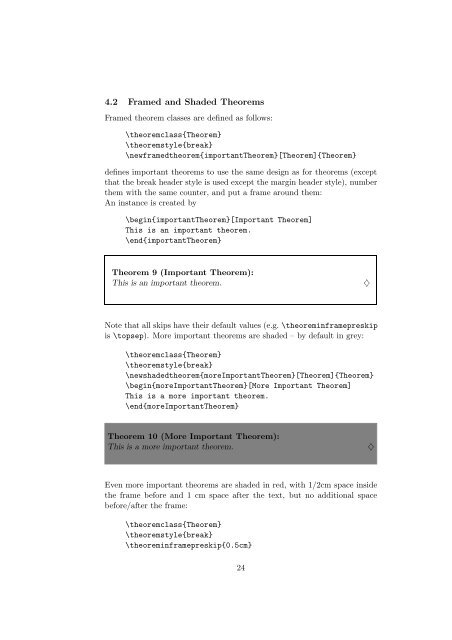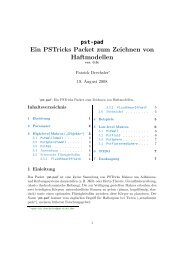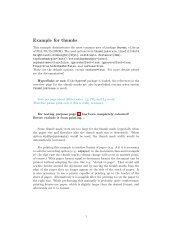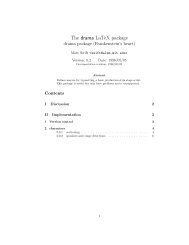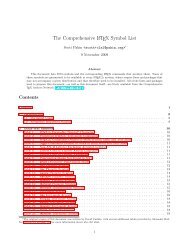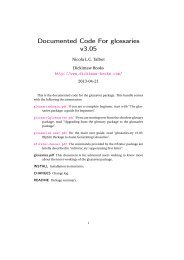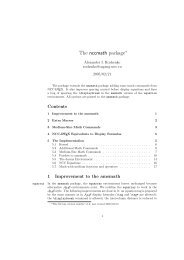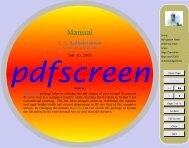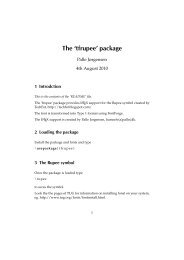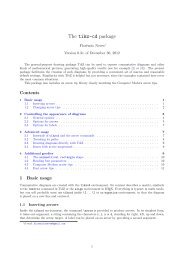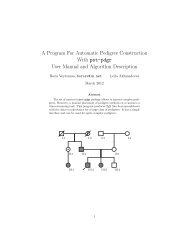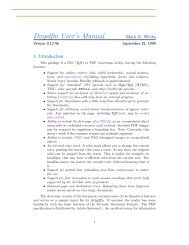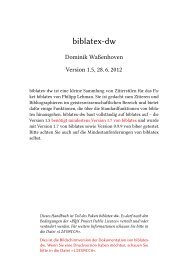ntheorem.pdf. - Mirrors.med.harvard.edu
ntheorem.pdf. - Mirrors.med.harvard.edu
ntheorem.pdf. - Mirrors.med.harvard.edu
Create successful ePaper yourself
Turn your PDF publications into a flip-book with our unique Google optimized e-Paper software.
4.2 Fra<strong>med</strong> and Shaded Theorems<br />
Fra<strong>med</strong> theorem classes are defined as follows:<br />
\theoremclass{Theorem}<br />
\theoremstyle{break}<br />
\newfra<strong>med</strong>theorem{importantTheorem}[Theorem]{Theorem}<br />
defines important theorems to use the same design as for theorems (except<br />
that the break header style is used except the margin header style), number<br />
them with the same counter, and put a frame around them:<br />
An instance is created by<br />
\begin{importantTheorem}[Important Theorem]<br />
This is an important theorem.<br />
\end{importantTheorem}<br />
Theorem 9 (Important Theorem):<br />
This is an important theorem. ♦<br />
Note that all skips have their default values (e.g. \theoreminframepreskip<br />
is \topsep). More important theorems are shaded – by default in grey:<br />
\theoremclass{Theorem}<br />
\theoremstyle{break}<br />
\newshadedtheorem{moreImportantTheorem}[Theorem]{Theorem}<br />
\begin{moreImportantTheorem}[More Important Theorem]<br />
This is a more important theorem.<br />
\end{moreImportantTheorem}<br />
Theorem 10 (More Important Theorem):<br />
This is a more important theorem. ♦<br />
Even more important theorems are shaded in red, with 1/2cm space inside<br />
the frame before and 1 cm space after the text, but no additional space<br />
before/after the frame:<br />
\theoremclass{Theorem}<br />
\theoremstyle{break}<br />
\theoreminframepreskip{0.5cm}<br />
24


